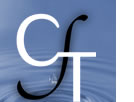 |
||||||||||
Understanding by Design
Overview
Understanding by Design, an excellent book by Grant Wiggins and Jay McTighe, offers a powerful framework for designing courses through what they call “Backward Design.” It seems “backward” in that it starts from the opposite end of the planning process we typically go through to design courses—we usually start by thinking about how to teach our content. Backward Design, in contrast, leaves teaching activities until the end and starts with the desired results of that teaching. In other words, Wiggins and McTighe argue that you can’t start planning how you’re going to teach until you know exactly what you want your students to learn.
“Teaching is a means to an end. Having a clear goal helps us educators to focus our planning and guide purposeful action toward the intended results.”
The Backward Design process proceeds in three phases, as follows:
I. Identify desired results.
First, you establish your learning goals for the course. What should students know, understand and be able to do? And how do you prioritize and narrow down the content you want to teach so it fits within the limited framework of the course? Wiggins and McTighe provide a useful process for establishing curricular priorities. They suggest you ask yourself three questions as you progressively focus in on the most valuable content:
-
What should participants hear, read, view, explore or otherwise encounter? This knowledge is “worth being familiar with.”
-
What knowledge and skills should participants master? Sharpen your choices by considering what is “important to know and do” for your students. What facts, concepts and principles should they know? What processes, strategies and methods should they learn to use?
-
What are big ideas and important understandings participants should retain? These choices are the “enduring understandings” that you want students to remember after they’ve forgotten the details of the course.
Answering each of these questions will help you determine the best content for your course, and create concrete, specific learning goals for your students.
II. Determine acceptable evidence.
In the second phase of Backward Design, you think about how you will decide if students are starting to master the knowledge and skills you want them to gain. What will you accept as evidence that students are making progress toward the learning goals of the course? How will you know if they are “getting it”?
When planning how you will collect this evidence, consider a wide range of assessment methods (for example, essay tests, term papers, short-answer quizzes, homework assignments, lab projects, problems to solve, etc.) in order to ensure that you test for exactly the learning you want them to gain. In other words, sometimes our assessments don’t match our learning goals and we therefore cannot attain the evidence we want.
For example, if one of your goals is for student to learn how to problem-solve, give them an assessment that requires a demonstration of their problem-solving skills. Have them write out each step they took in addressing the problem, and an explanation of why they took it, instead of simply providing the right answer.
III. Plan learning experiences & instruction.
Finally, after you have decided what results you want and how you will know you’ve achieved them, then you start planning how you’re going to teach. You can now move to designing your instructional strategies and students’ learning activities. What are the best exercises, problems or questions for developing your students’ ability to meet your learning goals? How can they practice using new knowledge to gain the skills you want them to learn? How can they apply their learning? Devise active and collaborative exercises that encourage students to grapple with new concepts in order to “own” them. You want to foster increasing understanding, not rote memorization.
Resources
-
Understanding by Design is available online and in the CFT library. Chapter One of the book provides a brief and accessible 12-page overview, entitled "What Is Backward Design?" In addition, Chapter Eleven offers blank templates that are useful for charting out a course.
-
The Understanding by Design Workbook, available online, offers additional templates and diagrams.
-
Introduction to Understanding by Design, is an online PowerPoint or PDF presentation.
-
See also the CFT's teaching guide on course design for other approaches to course design.
HOME | ABOUT CFT | PROGRAMS | SERVICES | RESOURCES
Center for Teaching |
General Questions? Web Site Questions? Copyright ©2009 |
